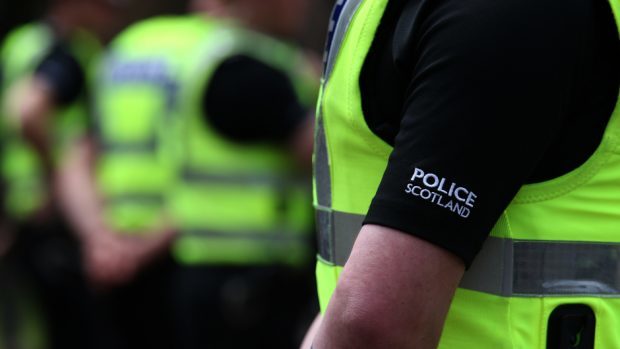Police Scotland is at the centre of a row over the strip-searching of children.
The force is unable to say how many children have been asked to remove their clothes, unlike in England where statistics have been published.
Tam Baillie, the Children and Young People’s Commissioner in Scotland, said he was “very concerned” at the lack of data for this “very intrusive” procedure.
The organisation Together, an alliance of children’s rights groups, recently published a far-reaching review into a range of issues facing young people.
A section in the 198-page report stated that some of the organisation’s members had expressed “concern” about strip-searching of children by police.
According to Police Scotland operating procedures, a strip-search involves the staged removal of all clothing, followed by a visual, external examination of the body.
It is different to an “intimate” body cavity search which must only take place either with the individual’s consent or under a sheriff’s warrant.
A draft code of practice on the Scottish Government website also states: “If necessary, the detainee may be required to hold their arms in the air or to stand with their legs apart and bend forward so a visual examination may be made of the genital and anal areas provided no physical contact is made with a body orifice.”
However, while the code sets out how strip-searches should be carried out, the force’s poor recording procedures mean it is difficult to establish the extent of the practice on children.
In its report, Together noted that the single force was asked for the number of strip-searches on children over a number of years.
But Police Scotland declined the request on the grounds of cost.
It was argued that the lack of a Scotland-wide system for logging custodies meant that trying to extract age data would exceed the cost threshold under Freedom of Information.
By contrast, in 2014 the Metropolitan Police revealed more than 4,500 children, some as young as 10, had been strip-searched over five years.
As part of Together recommendations, the force has been urged to provide “regular reports” to the Scottish Police Authority (SPA) about strip-searching for “the purpose of evaluating and monitoring”.
The organisation said that the data should be released publicly so as to ensure “openness and transparency”.
It added: “As a matter of principle, children should not be subject to strip-searching unless absolutely necessary, and then, it should be conducted in line with recognised international best practice.”
Tam Baillie said: “Strip-searching is, by its nature, a very intrusive procedure and should only be used in the most serious circumstances and always be regulated by strict safeguards.
“I am very concerned that Police Scotland is unable to produce data on the numbers of children and young people subject to this practice.”
Liam McArthur, a Liberal Democrat MSP, said: “It was recently revealed that thousands of children have been strip-searched by police in England and Wales.
“Police Scotland needs to explain whether it has any plans to start collating data on strip-searches.
“Was it set to be recorded on the new integrated custody IT systems before the £60 million programme collapsed?
“Making this information available would be a sensible step towards reassuring children’s charities, professionals and the public that the use of strip-searches is appropriate and proportionate.”
John Finnie MSP, a former police officer and the Scottish Greens’ justice spokesman, said: “It should be expected that the extreme circumstances which would lead to children being strip-searched should occur so infrequently that the figures should be easily recorded and published.
“It’s therefore unfortunate that there has been an issue in obtaining figures from Police Scotland because without them there’s no way of understanding how widespread this practice is.
“Sensibly, Together recommends that regular reports, with detailed figures on the strip-searching of children, should be sent to the Scottish Police Authority, a recommendation that Greens wholeheartedly support.”
A Police Scotland spokesperson said: “We are aware of the Together Scotland report and will consider the recommendations.
“We recently published our new approach to children and young people which defines how we will keep Scotland’s one million children and young people safe.
“Police Scotland will imminently complete the rollout of a new national custody recording system which will allow for this information to be collated.
“Due to different systems in use across the country, a figure could not be provided, as stated in the report.”
